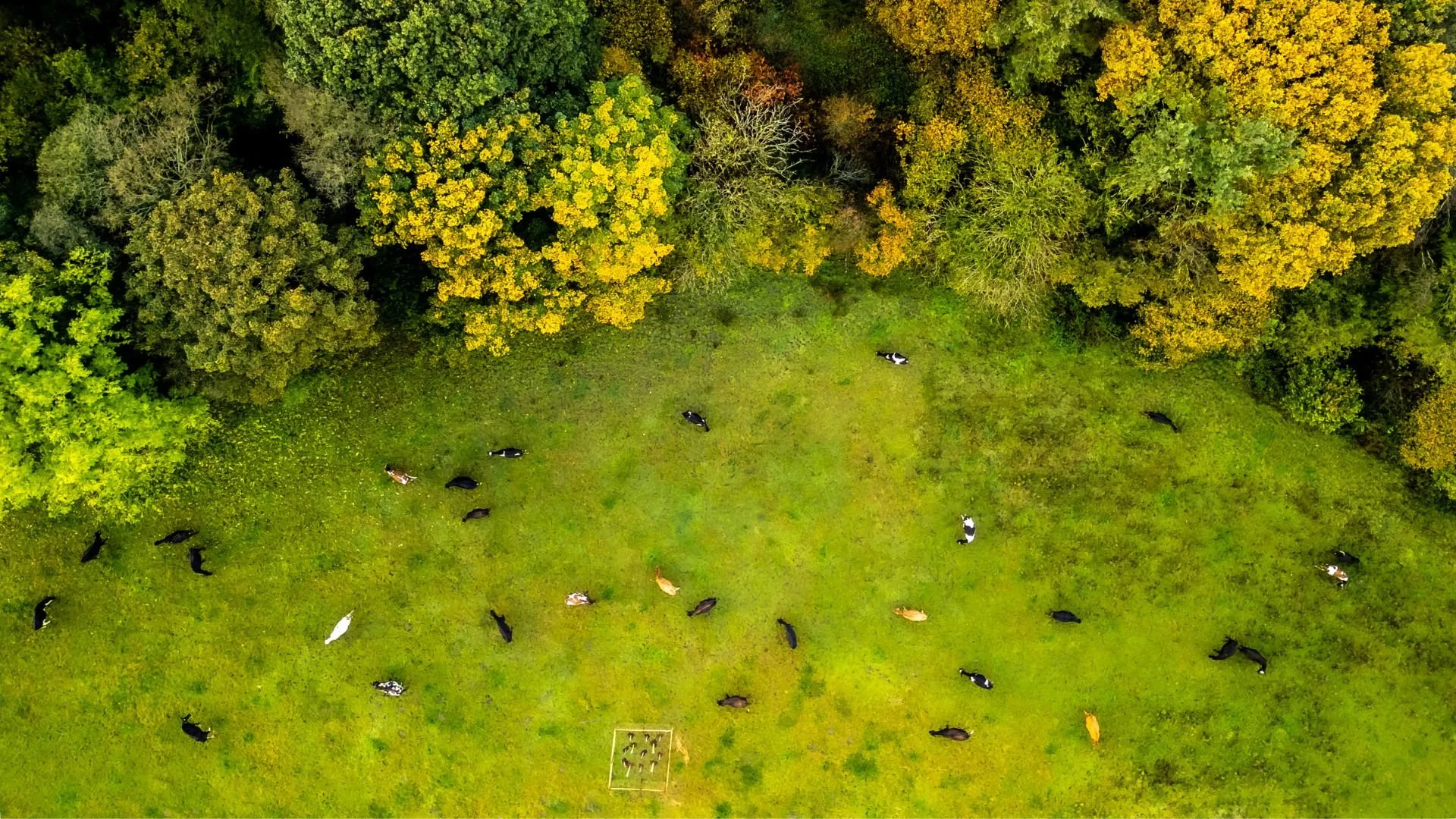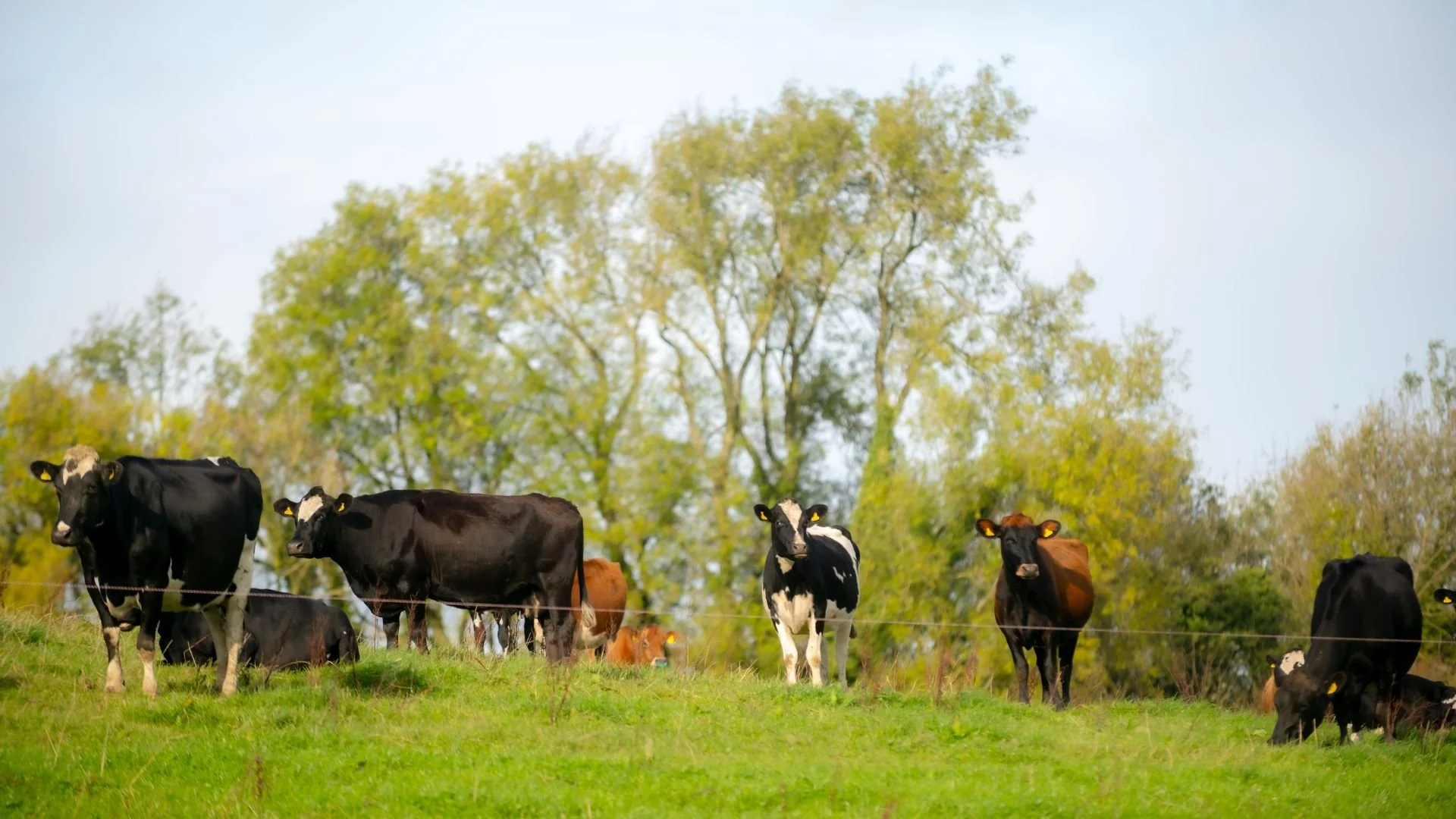Agroforestry for Economics
Agroforestry is a way of farming that works with nature, not against it. It means integrating trees into productive farmland so that they support the wider farming system rather than compete with it. From livestock shelterbelts to fruit trees in pasture, agroforestry is about seeing trees as part of the working landscape, delivering both environmental and economic value.
For farmers and landowners, trees are not just a tool for carbon or conservation. They are a practical investment in the resilience of farm businesses. Well-designed tree systems protect soil, improve water management, reduce inputs, and open new income streams. In a changing climate and a shifting funding landscape, agroforestry offers a way to future-proof both land and livelihoods.
What is Agroecology
Agroecology is the science and practice of farming with natural systems. It blends traditional farming knowledge with modern ecological understanding, recognising that soil, water, plants, animals, and people are all connected.
In an agroecological approach, farms are designed to mimic natural processes. That means protecting soil life, using nutrients efficiently, and managing land for long-term health rather than short-term gain. The result is a more resilient system - one that can better handle drought, flooding, and economic shocks.
Agroforestry fits neatly within this way of thinking. Trees are living infrastructure for farms: they cycle nutrients, protect crops and livestock, and support biodiversity. When managed well, they make ecological sense and financial sense at the same time.
How Do Trees Function as Part of an Agroecological System
On any farm, trees do far more than stand in a field corner. They actively shape the productivity and stability of the land.
Soil and nutrients: Tree roots reach deep, drawing up minerals that return to the surface through leaf litter. Species like alder and hazel can fix nitrogen, reducing the need for artificial fertiliser.
Shelter and microclimate: A single line of trees can make a big difference to wind exposure and evaporation. For livestock, trees provide shade and shelter that improves animal welfare and can boost weight gain and fertility.
Water management: Tree roots help water infiltrate the soil, reducing runoff and erosion. On sloping or flood-prone land, this means fewer nutrients lost downstream and better retention of moisture during dry spells.
Biodiversity: Flowering trees and shrubs attract pollinators, birds, and beneficial insects that control pests and support ecosystem balance.
Weather resilience: With changing weather patterns, trees offer stability by breaking up wind, holding soil together, and helping pastures recover faster after drought or heavy rain.
Across Cumbria and the North West, farms are already proving the value of this approach. Shelterbelts planted at Park House Farm near Torpenhow have improved livestock welfare and soil structure while providing long-term timber value. At Welton Farm near Carlisle, trees planted in a silvopastoral design are creating shelter, while improving biodiversity and resilience.
Agroforestry (Trees on Farms)
Agroforestry simply means combining trees with farming. It’s not about turning fields into forests - it’s about making trees work within productive systems.
There are several main types:
Silvopasture: Trees grown in grazed pasture, where livestock and woodland coexist. This improves shade, forage quality, and shelter.
Silvoarable: Rows of trees planted among crops, where they reduce wind exposure, improve soil structure, and add long-term timber or fruit income.
Riparian planting and shelterbelts: Trees planted along watercourses or field edges to manage runoff and protect soil.
Hedgerows and boundaries: Restoring or widening hedgerows to connect habitats and provide microclimate control.
Agroforestry keeps land productive while adding new dimensions of value. The key is design - matching species and layout to the needs of the land, the farmer, and the market.
Why Invest in Trees?
The answer to this question lies in both protection and potential.
Protecting productivity: Trees help shield crops and livestock from extremes of weather. They reduce wind damage, retain moisture, and prevent soil loss. Over time, this stabilises yields and improves overall farm performance.
Reducing input costs: By recycling nutrients and improving soil fertility, trees can reduce reliance on chemical fertilisers and imported feed.
Long-term asset creation: Trees are a growing resource. They add capital value to land and can provide sellable products such as timber, fruit, nuts, or carbon credits.
Diversifying income: Multiple income sources mean greater resilience. Agroforestry supports diversification without needing to take land out of production.
Improved funding eligibility: Many national and regional schemes now reward agroforestry and woodland creation, such as local community forest programmes like Raise.
The economics are clear: well-planned trees don’t just deliver environmental gains, they strengthen the financial sustainability of the whole farm.
Woodlands on Farms
Beyond individual tree systems, larger blocks of woodland can be integrated into working farms for both environmental and financial gain.
Farm woodlands can stabilise steep or marginal land, support biodiversity, and contribute to natural flood management. They can also become productive assets by producing timber, woodfuel, or recreation opportunities.
Importantly, not every woodland has to be commercial. Mixed-use woodlands can combine productive trees with areas for wildlife, education, or community engagement. This flexible approach allows farms to design woodland that fits their land and long-term goals.
At Park House Farm, for example, new woodland has been created alongside grazing to improve animal welfare and provide a future timber crop. At Welton Farm, hedgerows and a tree-lined avenue were planted, to improve the farm’s health, resilience and land management practices. These projects show how trees can work alongside productive farming rather than replace it.
Maximising Value with Woodland on Farms
Planting and maintaining woodland means you can profit from a range of income streams and wider benefits. Some are direct, others take longer to realise, but together they add up to a more resilient and valuable farm business.
Carbon Credits
Farmers can generate verified carbon credits by planting and managing trees under recognised standards like the Woodland Carbon Code. These credits are sold to organisations seeking to offset their emissions, providing a new source of income.
Carbon markets are still developing, and the process takes time. Typically, credits can only be sold after several years once carbon storage is verified. But for farms with the right conditions, this can form part of a long-term diversification plan.
Forest Products (Timber)
Timber remains one of the most traditional and valuable woodland outputs. Species such as oak, ash, birch, and alder offer long-term returns, while faster-growing species like willow or poplar can provide earlier harvests for biomass or woodfuel. Hazel and sweet chestnut also work well on shorter rotations and provide durable materials for fencing and other on-farm uses.
Even small woodlands can support a local supply chain for fencing materials, firewood, or craft timber. The key is to plan for management from the outset so that quality and value are maintained over time.
Tourism and Recreation
Trees add beauty and biodiversity to farmland - qualities that attract visitors. Farm woodlands can host small-scale tourism such as walking routes, glamping sites, or educational visits.
These ventures don’t just create income; they build community engagement and awareness of farming’s role in climate and nature recovery.
Traditional Craft Products
Woodlands can support a wide range of rural crafts, from charcoal burning and green woodworking to basketry and furniture making. These add local value to timber and help keep heritage skills alive.
For some farms, collaborating with local makers or community groups can open up creative partnerships, connecting people to the landscape and its materials.
Food
Trees can also produce food directly; from fruit and nuts to honey and mushrooms. In silvopasture systems, trees improve the quality of grass and forage by reducing stress on livestock and enriching soil biology.
Agroforestry can therefore contribute to the food economy in multiple ways, strengthening local supply chains and improving farm self-sufficiency.
Funding for Agroforestry
A range of funding is available to help farmers and landowners get started with agroforestry and woodland creation.
Here in Cumbria, Raise: Cumbria Community Forest provides tailored funding and support for farmers interested in integrating trees into their land. This includes help with design, planting, and long-term management, ensuring that woodland creation aligns with both farm business goals and environmental priorities.
Nationally, farmers can also access grants through schemes such as the England Woodland Creation Offer (EWCO): supporting tree planting projects that deliver climate and nature benefits.
Raise works to make sure funding opportunities are accessible and practical. Our team helps identify the right mix of grants and provides co-design support to make sure projects are well integrated into farm operations.
If you’re considering agroforestry or woodland creation on your land, visit our Funding page to find out what support is available.
Agroforestry as an Economic Strategy
Agroforestry is not just an environmental idea, it’s an economic strategy for the future of farming. Trees make land more productive, businesses more resilient, and rural communities more secure.
Whether through silvopasture, riparian planting, or new woodland creation, integrating trees into farms offers both immediate benefits and long-term returns.
The challenge is no longer whether to plant, but how - and Raise is here to help farmers across Cumbria design systems that work for their land, their livelihoods, and the wider landscape.





